Ping G400 Irons

What Is The Difference Between Ping G400 And G410 Irons?
The Ping G400 and the Ping G410 irons represent a series of iron golf clubs ranging from a 4 iron to a 9 iron. There are four types of wedges: a utility wedge, pitching wedge or sand wedge.
The Ping G400 series incorporates face-flexing technology that helps in launching the golf ball high and fast. This gives the player the same stopping power and distance of playing on a tour.
G400 Iron golf club’s face is made from Hyper 17-4 stainless. It is strong and thin. The address point has a smooth and streamlined hosel transition that allows the golfer to feel more confident with his shots.
Additionally, the premium finish lessens the friction with the turf by 40% and help to enhance the spin and launch with increased forgiveness.
Ping G410 golf clubs have an easy-moving, flexible face that allows players to reach maximum height and distance. It also reduces the chance of the ball hitting the green. This golf club also helps to hold the putting surface in a good way with precision and control.
They are able to save more weight by focusing on their hosel or toe, which in turn results in increased perimeter weighting. The resilient hydropearl 2.0 finish ensures that the transition through the turf is smooth while offering good contact at the same time.
The Ping clubs use COR-Eye technology and have a deep top-rail undercut. The badge reduces vibrations and gives the club a strong feel and sound. There are many options for shaft flexes available in steel and graphite.
-
Ping G410 has a lower offset by 10% than the Ping G400, making it more flexible. The Ping G410 feature a smaller blade length and a more refined shape than the Ping G400 that increases its visual appeal for players who want a classy looking golf club. The Ping G400 appear to be chunkier at the top and has a wider sole. Golfers can be more consistent by using the Ping G410, which has 8% less MOI than its Ping G400 counterpart. The Ping G410 clubs are smaller and softer than the Ping G400 ones that make it easier to hit and launch the ball with these golf clubs. The thin leading edge increased hinging and enhanced face flex are other contributing factors. The Ping G400 series have higher average backspin for some players when compared to the Ping G410 golf clubs while they enjoy the sound of the Ping G410 more than the Ping G400. Ping G400 golf clubs’ finish tends to wear faster than that of Ping G410. The Ping G410 golf clubs have a marginally faster average clubhead speed and ball speed, as well as a lower average descent angle than the Ping G400. The average peak height, carry distance and a total distance of the Ping G410 golf clubs are more than that of the Ping G400 series ones by about three, five and eight yards respectively.
Most players find that the Ping G410 series has only some minor improvements over the Ping G400 golf clubs. If you already have the G400, I don’t believe there is enough to justify upgrading to the G410.

5 Things You Need To Know About The Ping G400 Irons
Undercut Top Edge
The Ping G400 irons have been on a serious diet; mass has been removed from inside the top edge and relocated lower to have more effect on forgiveness. A thinner top edge also lends itself to flexing at impact, which is part of the reason Ping are so confident the G400 delivers on its “higher and further” promise.
One Ping tour staffer summed it up, saying: “You’ve turned my 7-iron into 6-iron distance, but I’m hitting it through an 8-iron window.”
This lovely finish, which is also on Ping’s iBlades and i200s, gives the G400 a real premium, quality look – and serves a purpose. It reduces friction with the turf, meaning less lost energy at impact, and better at dealing with moisture. Ping claims it is so effective that it eliminates flyers from the rough.
Marty Jertson is Director of Product Development at Ping. He says, “We were challenged to discover more about finishes, and what they can offer for golf clubs.” This finish repels water away from the golf ball so you get better friction and don’t have those big fliers.”
It also reduces friction (40 percent less friction) between the sole and turf. This helps club to better navigate the turf.
Marty Jertson is Director of Product Development for Ping. He will guide you through the entire Ping G400 Irons.
Ping haven’t tinkered with the head shape too much from the G, but a sharper radius on the top edge and more rounding on the low toe area give a tour-inspired shape which isn’t something you often hear about a game improvement iron.
Marty Jertson states that the head shapes of the shorter irons have been reworked to be more “tour-style”, cleaner, sharper and thinner. We also changed the thickness and lines at the toe and top rails a bit. Even though it’s a pretty big iron and a game enjoyment iron, the short irons look and perform with a lot of precision.”
“In the long irons, we’ve made the flange very smooth so you don’t see anything jutting out in the playing position.”
The COR-Eye technology stiffens the central face. This allows the club’s leading edge, acting as a hinge to increase face deflection.

Ping G400 irons have developed new materials and finishes for their latest irons. They fly further, but also higher.
It’s a fact that rare are truly exceptional game-improvement tools. If you can name more than five, without checking Google, you’re either easily pleased or know something we don’t.
RELATED: Irons Review for Ping G425
Designers have viewed game improvement irons as inferior to better players in the past. This is what causes the problems. The wrong perception was that the “average” golfer wanted forgiveness. Golf engineers forgot to consider that a fair looking head shape would be accepted by golfers as playable.
Ping was guilty with their original Ping Zings. But thanks to technology things have changed.
TESTED: Forged irons ranked by forgiveness
REVIEWED: Longest 2018 irons Click here
Its COR-Eye Technology combines with a new top rail undercut to increase face flexing in a catapult-like fashion for faster ball speeds that launch shots higher and farther with low spin for a strong flight. Hyper 17-4 stainless is made by heat treating the steel. This makes it 40% more strong than standard 17-4 stainless and gives you a slimmer face with 18% more flexibility.
It delivers tour-quality performance, while also being extremely easy to hit with an incredible feel. It is hitting higher, landing softer and improving distance for some golfers by up to 15 yards.
“During testing, one of our tour players stated it the best: “This G400 7 iron has turned into my 6-iron and in an 8-iron window.” Golfers can expect one less club to the green with the height of two less clubs. This is a formidable combination.

Ping G400 Irons – First Impressions
These irons were my first thought when I heard about them. They would replace the Ping GMax irons that I had seen a few years back.
Ping have two-year product cycles so you can usually work out what is coming next.
These were my first reactions when I took them out of their box.
Is there any iron that looks so good at improving your game as the Ping G700. I’m not sure there has been.
Yes, it’s still large with a thick topline and a fair bit of offset but it just looks fantastic – so much style and shelf appeal.
I’ve compared them with a G400 iron below and you can see they are a bit larger. Ping G700 are on the right.
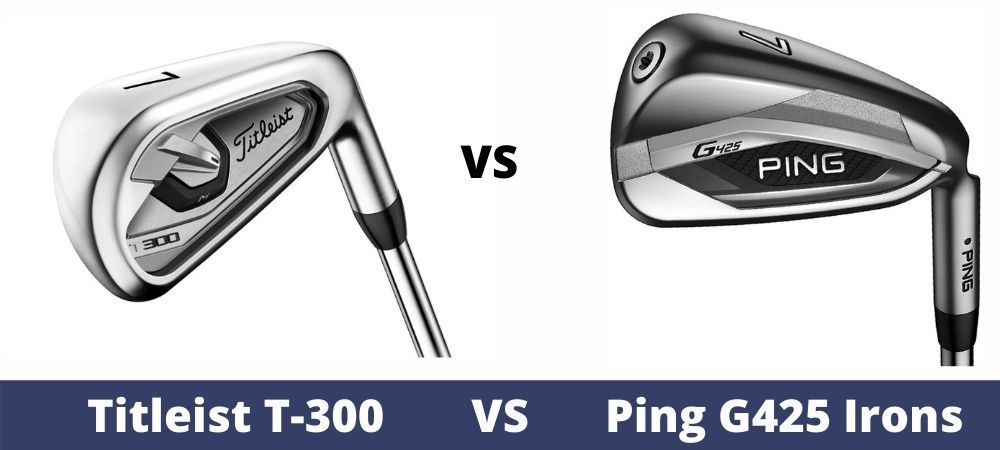
Are The Ping G410 and G400 better?
The Ping G410 has a better design than the G400. The improved design allows golfers to drive the ball 5 to 6 yards further.
The shorter blade length combined with the relatively less offset gives the Ping G410 a more refined shape and a better visual appeal. It is visible from both the address and the back.
The hydro-pearl finish ensures that there is no glare on the golf clubs. These aspects make the Ping G410 more suitable than the Ping G400 for low and mid handicappers.
Ping G410 has a more free-moving head and is less rigid than Ping G400. Golfers can achieve maximum height with maximum control and precision.
If this was to your liking, you might also be interested in
Ping I200 Irons
The ball will spin less and you’ll have less chances of it hitting the green. The face structure additionally helps in delivering faster ball speeds.
Ping G410 clubs have a wider sole, which increases the Moment of Inertia. The face of the Ping G410 golf clubs has a full-cavity co-molded aluminum badge and elastomer that suppress vibrations and makes a powerful, reassuring sound.
The badge also makes the Ping G410 feel lighter and more comfortable in the hands of the players. Golfers will also find the club more consistent.

Tested! Ping G V G400 Irons
Ping’s game improvement G irons have earnt a deserved reputation as being just about the most club golfer-friendly irons available.
Since the first set (G2s) in 2004 they’ve got progressively better, so it’s no surprise that unlike some brands Ping haven’t felt the need to tear up the blueprint and head back to the drawing board to redesign them for 2017.
Chris Ryan, our test pro, hit the G and the new Ping G400 7 irons on a launch monitor to allow us to accurately compare both models.
We also travelled to Ping’s HQ in Arizona and tested with Ping’s Director of Product Development Marty Jertson, so that we could see for ourselves the difference in the two models.
If you were into this, you might also like
Ping Iblade Irons
You can see Marty’s reaction when he tested the irons of the Ping G400 against the Ping G.

Ping G400 Irons
Ping is probably better known for their premium player’s performance irons; but don’t overlook their entry level irons.
The Ping G400 irons impressed us almost immediately. Although we didn’t know what caused it, the launch was higher than any other Ping irons that we had ever used. We would later discover that these irons have a higher launch due to the 17-4 stainless steel used in their construction.
They are cavity-back irons, so they were immediately a hit with our handicap testers.
Ping G400 irons are slightly smaller than most iron sets of the game improvement category. We think that this is a great advantage for high handicappers as they will get more value from it as their game develops.
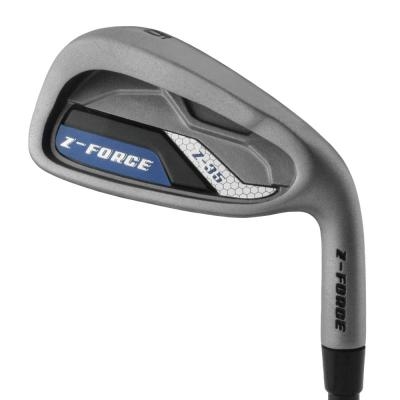
Ping G400 Features
These clubs stand out from all other irons because of their flex. Ping calls it “face-flexing” technology but whatever it really is, it helps to launch the ball very high very quickly. The ball speed you get out of these clubs is exceptional.
The club is able to flex so well also because of the thin stainless steel face. These irons are also very responsive due to their graphite shaft. The COR-Eye technology, which we have seen in previous Ping clubs, contributes to the great loft they offer.
The Callaway Rogue Irons do not offer the same benefits that the Ping G400 does. We believe graphite shafts work best to keep the club’s weight down and not lose power. The G400’s feature a graphite shaft of high quality.
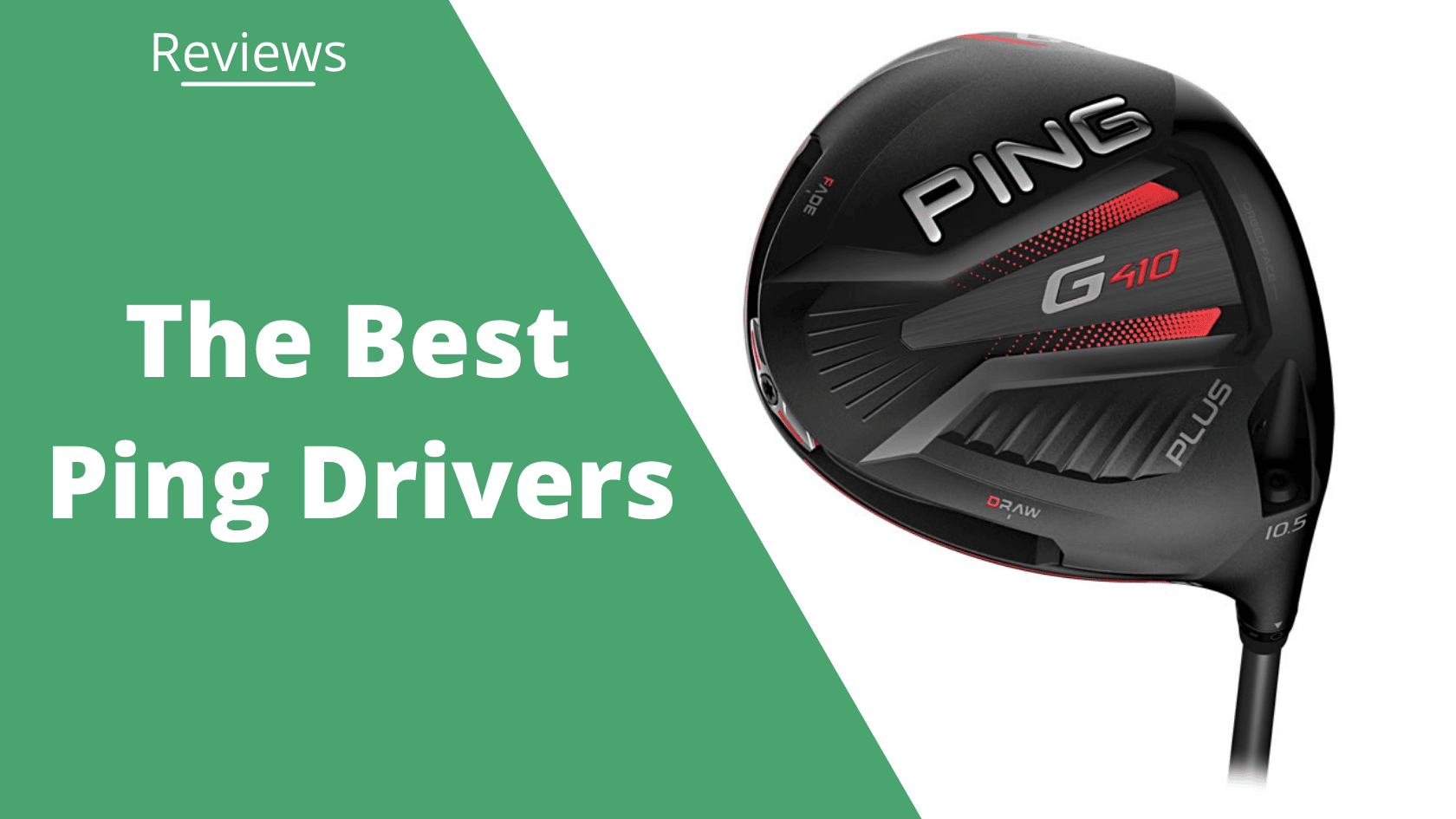
Can Ping G400 irons be forgiven?
If you’re looking to forgive, these irons will be very useful as long as your head is not too small.
Forgiveness can mean different things to different people. Ping G400 irons are especially forgiving. They provide natural, easy launch and great distance. As long as your accuracy is moderate.
If you are pretty decent at making consistent contact, you will find that the clubs pretty much do the rest. When you pure the ball, the face flexes like a trampoline and the long irons make it surprisingly easy to get the ball airborne.

Gradient Of Loft (G400 Vs. G410).
Interestingly although Ping has made a few prominent variations to the Ping G410 after its Ping G400, the manufacturer has decided to retain the same loft for all its iron clubs and wedges in both the series. These are the standard equipment for Game Improvement.
Both sets also have identical Power Spec lofts (lower lofts) for their golf clubs. This is a custom-designed loft configuration from Ping that is used to strengthen the lofts of all the clubs throughout a set. This helps golfers who wish to improve their speed and distance. Power Spec lofts are primarily for older golfers.
The lofts for the 7 irons, 4 irons, and 7 irons are altered by 1.5deg. 8 irons and 9 Irons have a variance of 2deg. Utility and pitching wedges show a 2deg change. While the pitching and utility wedges show a 1.5deg change, there are no changes to the lob wedge.
Ping’s Website shows the loft specifications for the G400 series. These data are also available in the following table:
Iron
Loft (degrees).
Power Spec Loft
4 iron
20.5deg
19deg
5 iron
23.5deg
22deg
6 iron
26.5deg
25deg
7 iron
30deg
28.5deg
8 iron
34.5deg
32.5deg
9 iron
39.5deg
37.5deg
PW
44.5
42.5deg
UW
49.5deg
47.5deg
SW
54deg
52.5deg
If this was to your liking, you might also be interested in
Ping I210 Irons
LW
58deg
58deg
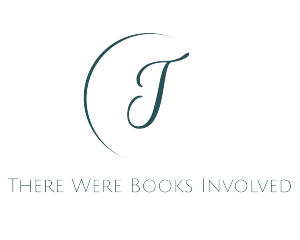

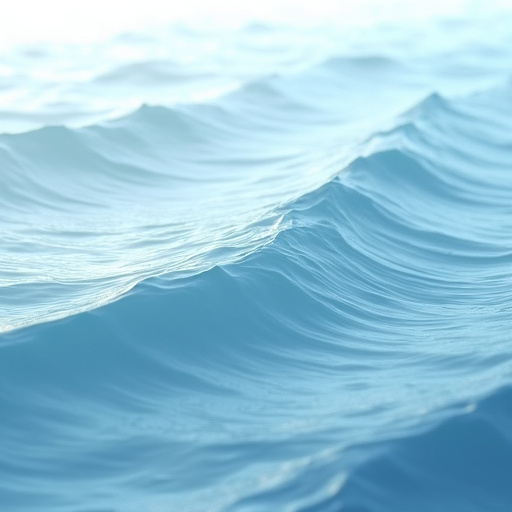

















/cdn.vox-cdn.com/uploads/chorus_asset/file/23133262/1235479424.jpg)